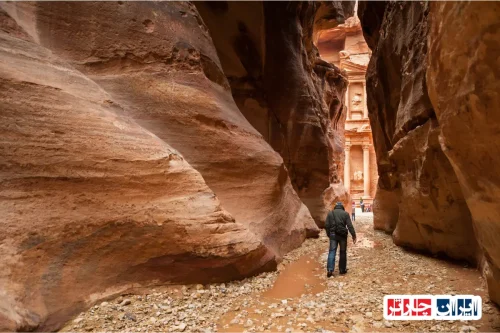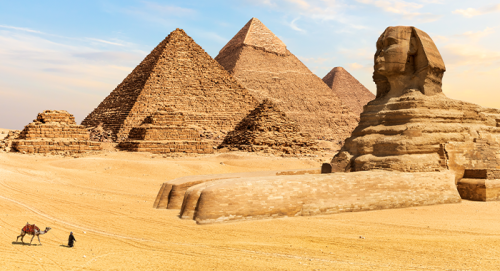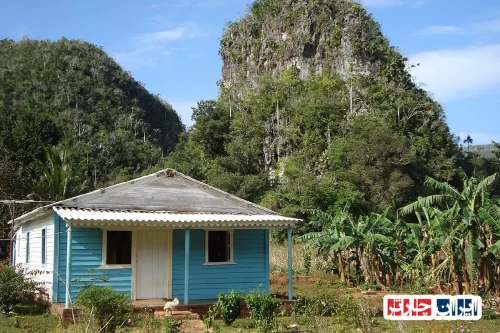The Siq Petra Jordan: Discover the Majestic Natural and Architectural Wonders of the Siq in Petra Jordan
The Siq in Petra Jordan stands as one of the most breathtaking natural formations and architectural marvels in the world, captivating visitors with its towering cliffs, intricate carvings, and historical significance. As the main entrance to the ancient city of Petra, this narrow gorge stretches for approximately 1.2 kilometers, guiding travelers through a stunning canyon that reveals the grandeur of Nabataean engineering and natural beauty. Exploring The Siq-Iran Charter offers an immersive experience into the rich history, cultural heritage, and geological wonders of this iconic site. The Siq’s unique combination of natural formations and man-made sculptures makes it a must-visit destination for history enthusiasts, adventure seekers, and nature lovers alike. Walking through the Siq, visitors are transported back in time, witnessing the seamless integration of natural geology with ancient craftsmanship that has withstood centuries of weathering and human activity. The towering sandstone walls, some reaching heights of over 80 meters, are adorned with carvings and inscriptions that tell stories of the Nabataean civilization and their spiritual beliefs. The journey through the Siq culminates at the breathtaking Treasury, a symbol of Petra’s architectural ingenuity and a UNESCO World Heritage Site. Whether exploring the geological formations, admiring the ancient carvings, or capturing photographs of the dramatic landscape, the Siq in Petra Jordan remains an extraordinary testament to the harmony between nature and human creativity, inviting travelers to marvel at its timeless beauty and historical significance.
Discovering the Hidden Wonders of The Siq Petra Jordan
The Siq in Petra, Jordan, stands as one of the most breathtaking natural and archaeological marvels in the world. This narrow, winding gorge stretches over a kilometer, guiding visitors through towering cliffs carved by centuries of natural forces and ancient craftsmanship. As you traverse this iconic passage, you are transported back in time to an era when the Nabateans mastered the art of engineering and architecture, creating a pathway that leads directly to the heart of Petra’s archaeological treasures. The Siq’s dramatic walls, with their vibrant hues and intricate textures, serve as a natural canvas that highlights the region’s geological diversity and historical significance. Exploring the Siq offers a unique opportunity to witness how nature and human ingenuity intertwine to produce a site of unparalleled beauty and cultural importance, making it a must-visit destination for travelers seeking authentic historical experiences in Jordan.
The Geological Formation and Natural Beauty of The Siq Petra Jordan
The formation of The Siq in Petra is a result of millions of years of geological processes, including tectonic activity and erosion. The narrow canyon was carved by water and wind over millennia, shaping the towering sandstone cliffs that reach heights of up to 80 meters. The natural colors of the rocks—ranging from deep reds and oranges to purples and browns—create a stunning visual spectacle that captivates every visitor. The natural landscape not only provides a scenic backdrop but also played a crucial role in the strategic placement of Petra’s city, offering natural protection and a controlled access point. The geological features of The Siq reveal the region’s complex earth history and demonstrate how natural forces have sculpted a landscape that is both awe-inspiring and functional for ancient civilizations. Today, the natural beauty of The Siq continues to attract photographers, geologists, and tourists eager to experience its majestic scenery firsthand.
Historical Significance and Architectural Marvels of The Siq Petra Jordan
The Siq served as the main entrance to the ancient city of Petra, which flourished as a vital trading hub in the Nabatean Kingdom. Its strategic location and natural defenses made it an ideal gateway for merchants and travelers. The narrow passage was ingeniously integrated with the city’s water management system, featuring channels and aqueducts that supplied water to Petra’s inhabitants. The walls of The Siq are adorned with carved niches, tombs, and inscriptions that reflect the artistic and cultural achievements of the Nabateans. These architectural features demonstrate their advanced engineering skills and religious beliefs, with some carvings depicting deities and mythological scenes. The grandeur of the Treasury, the most famous monument at the end of The Siq, exemplifies the sophistication of Nabatean architecture and their ability to blend natural landscape with human craftsmanship. Exploring The Siq offers insights into the ancient civilization’s ingenuity, religious practices, and their mastery of stone carving and construction techniques.
Practical Tips for Visiting The Siq Petra Jordan
Visiting The Siq in Petra requires careful planning to ensure an enjoyable experience. It is recommended to wear comfortable walking shoes suitable for uneven terrain and to carry sufficient water, especially during hot months. Starting early in the morning allows visitors to avoid crowds and enjoy the serenity of the site, with the soft morning light enhancing the vibrant colors of the canyon walls. Guided tours can enrich your understanding of the historical and geological significance of The Siq, as local guides share fascinating stories and insights. Photography enthusiasts should bring their cameras to capture the dramatic lighting and intricate textures of the cliffs, particularly during sunrise and sunset when the colors are most vivid. Remember to respect the site’s preservation rules, avoid touching or damaging the carvings, and stay on designated paths to help conserve this UNESCO World Heritage site for future generations. A well-prepared visit to The Siq promises unforgettable memories and a deeper appreciation of Jordan’s rich cultural heritage.
The Artistic and Cultural Carvings of The Siq Petra Jordan
The walls of The Siq are decorated with a variety of ancient carvings, inscriptions, and niches that reveal the artistic talents of the Nabateans. These carvings include religious symbols, deities, and scenes depicting daily life, reflecting the spiritual and cultural beliefs of the civilization. The intricate craftsmanship demonstrates their advanced skills in stone carving and their ability to integrate art into functional architecture. Some carvings served as tomb markers or religious offerings, while others narrate mythological stories or commemorate important events. The preservation of these artworks provides valuable insights into the religious practices, social structure, and artistic traditions of the Nabateans. The combination of natural rock formations and human-made carvings creates a unique aesthetic that continues to inspire artists and historians alike. Exploring these artistic elements enhances the visitor’s understanding of the cultural richness embedded within The Siq’s landscape.
The Role of The Siq in Nabatean Trade and Society
The Siq was not only a natural gateway but also a vital component of Petra’s thriving trade network. It controlled access to the city and facilitated the movement of goods such as spices, textiles, and precious stones along the ancient Incense Route. The narrow passage served as a defensive barrier, protecting the city from invasions and rival tribes. Inside Petra, the Siq’s strategic location supported social and economic activities, making it a bustling hub of commerce and cultural exchange. The Nabateans utilized the natural landscape to develop water reservoirs, terraced gardens, and marketplaces within the city, all interconnected with The Siq. This integration of natural geography and urban planning exemplifies their sophisticated approach to city development. Understanding the significance of The Siq in Nabatean society highlights its role as a cultural and economic artery that contributed to Petra’s prosperity and enduring legacy.
Unforgettable Views and Scenic Spots Along The Siq Petra Jordan
The journey through The Siq offers numerous opportunities for breathtaking views and memorable photo moments. As sunlight filters through the narrow canyon, it creates a mesmerizing play of light and shadow on the sandstone walls, especially during dawn and dusk. Several vantage points along the path provide panoramic views of the surrounding mountains and the iconic Treasury at the end of the gorge. Small waterfalls and natural formations add to the scenic beauty, making each step a visual delight. Visitors can pause at designated spots to admire the intricate carvings or simply soak in the tranquility of this ancient passage. The natural acoustics and atmospheric lighting make walking through The Siq a sensory experience that leaves a lasting impression. Capturing these scenic spots ensures that the magic of this extraordinary site is preserved in photographs and memories alike.
Additional Attractions Near The Siq Petra Jordan
Beyond The Siq, Petra offers a wealth of other archaeological and natural attractions worth exploring. The Royal Tombs, Monastery (Ad Deir), and the Colonnaded Street showcase the city’s architectural grandeur and historical depth. Nearby natural sites such as the High Place of Sacrifice and the Mountain of the Pharaoh provide panoramic views and insights into Nabatean religious practices. Visitors can also enjoy local markets, traditional Jordanian cuisine, and cultural performances that enrich the overall experience. These attractions complement the visit to The Siq, offering a comprehensive understanding of Petra’s historical and cultural landscape. Exploring these sites allows travelers to immerse themselves fully in the legacy of this ancient city and appreciate its significance as a UNESCO World Heritage site.
Modern Technologies Enhancing Preservation of The Siq Petra Jordan
Today, advanced technologies play a crucial role in safeguarding The Siq and Petra’s archaeological treasures. 3D laser scanning and digital mapping enable detailed documentation of the site’s current condition, helping experts monitor deterioration and plan effective conservation strategies. These tools facilitate non-invasive assessments, ensuring the integrity of the carvings and rock formations. Additionally, climate control measures and protective barriers are used to prevent damage from environmental factors such as erosion, wind, and human activity. Digital archives and virtual reality experiences also allow people worldwide to explore The Siq remotely, raising awareness about its importance and the need for preservation. Integrating modern technology with traditional conservation methods ensures that this iconic passage remains intact for future generations to admire and study, preserving its cultural and historical value indefinitely.
FAQ about The Siq Petra Jordan
- What is the Siq in Petra?
- The Siq is a narrow, winding gorge that serves as the main entrance to the ancient city of Petra in Jordan. It stretches over a kilometer and features towering sandstone cliffs carved by natural forces and ancient craftsmanship, leading visitors directly to Petra’s archaeological treasures.
- How was the Siq formed geologically?
- The Siq was formed over millions of years through tectonic activity and erosion caused by water and wind. The natural processes carved the sandstone cliffs, which reach heights of up to 80 meters, creating the stunning narrow canyon seen today.
- What is the significance of the Siq in Nabatean civilization?
- The Siq served as the main gateway to Petra, facilitating trade and travel. Its strategic location protected the city and integrated with water management systems. The walls are adorned with carvings, niches, and inscriptions reflecting the Nabateans’ artistic and religious practices.
- What are some tips for visiting the Siq?
- Wear comfortable shoes suitable for uneven terrain, carry sufficient water, and visit early in the morning to avoid crowds. Guided tours enhance understanding, and photography is best during sunrise or sunset when the lighting accentuates the canyon’s colors.
- What artistic features can be seen in the Siq?
- The walls feature ancient carvings, inscriptions, and niches depicting deities, mythological scenes, and daily life. These artworks showcase the Nabateans’ craftsmanship and religious beliefs, blending natural rock formations with human artistry.
- How did the Siq contribute to trade in Petra?
- The Siq controlled access to Petra and was part of the Incense Route, facilitating the movement of spices, textiles, and precious stones. It also provided defense against invasions, supporting the city’s economic prosperity.
- What scenic spots can visitors enjoy along the Siq?
- Visitors can enjoy breathtaking views of the canyon walls illuminated by sunlight, natural formations, and the iconic Treasury at the end. There are vantage points for panoramic photos and spots to appreciate the play of light and shadow.
- Are there other attractions near the Siq?
- Yes, nearby sites include the Royal Tombs, the Monastery (Ad Deir), the Colonnaded Street, and natural viewpoints like the High Place of Sacrifice. These enrich the experience of exploring Petra’s archaeological and natural beauty.
- How is modern technology used to preserve the Siq?
- Advanced tools like 3D laser scanning and digital mapping help monitor deterioration and plan conservation. Virtual reality and digital archives also promote remote exploration and awareness, ensuring long-term preservation.
- What is the best time to visit the Siq?
- Early morning or late afternoon are ideal for avoiding crowds and capturing the best lighting for photography. The soft light during sunrise and sunset enhances the canyon’s vibrant colors.
- Is it necessary to hire a guide?
- While self-exploration is possible, guided tours provide valuable insights into the history, geology, and art of the Siq, enriching your understanding of this UNESCO World Heritage site.
- What should I avoid during my visit?
- Avoid touching or damaging carvings, straying from designated paths, and carrying large or heavy equipment that may harm the site’s integrity. Respect preservation rules to help conserve the site for future visitors.
- How does the Siq reflect Nabatean culture?
- The carvings, inscriptions, and architectural features reveal religious beliefs, social structure, and artistic skills of the Nabateans. The integration of natural landscape with human craftsmanship exemplifies their ingenuity.
- What makes the Siq a must-visit destination?
- The combination of natural beauty, archaeological significance, and cultural history makes the Siq a unique experience. Walking through this ancient passage offers a glimpse into a lost civilization amid stunning scenery.
- How can I help in preserving the Siq?
- Follow all site rules, avoid touching carvings, stay on designated paths, and support conservation efforts. Responsible tourism ensures the site remains intact for generations to come.






















